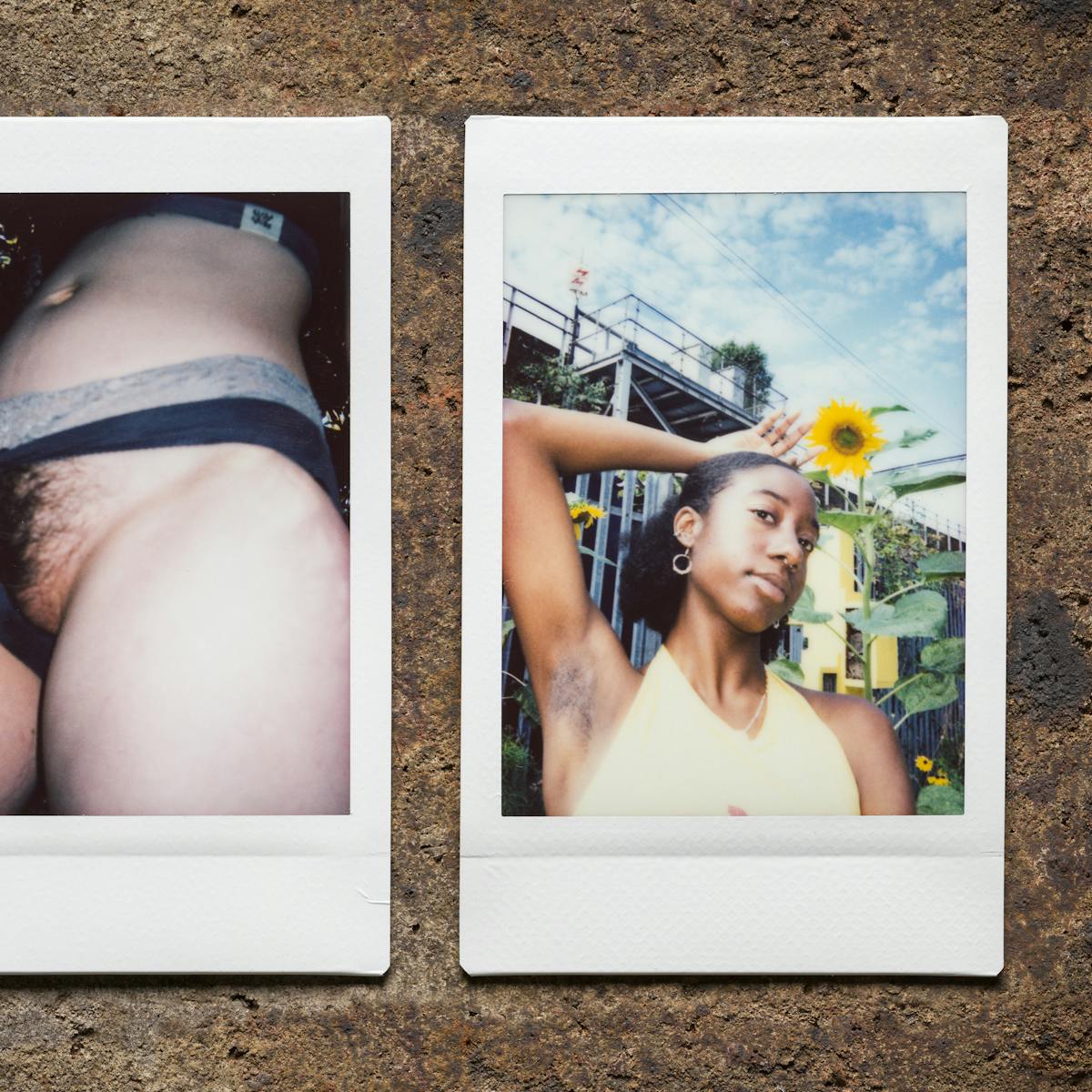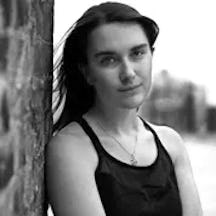During a unique moment when much of life was paused, Farah Esset and Eden Rickson began to consider the beauty rituals being ditched during lockdown. Would we restart things like removing our body hair once it was over? And what compels us to wax, pluck and shave in the first place? They decided to find out, collecting stories and portraits that explore the intimate interplay between body hair and identity.
It was July 2020, the middle of the first national coronavirus lockdown. We, two would-be photographers, somehow found ourselves squatting behind a bush in London’s Charing Cross, taking pictures of a woman’s, well, bush.
We were hungry to interrogate the beauty industry’s worship of hairlessness during this unique moment where our lives felt like they were on pause. We wanted to explore what was going to be worth resuming, starting with our relationship to ourselves and our hair.
We made a call-out on Instagram, eager to interview and photograph strangers about their body hair. We were overwhelmed with responses.
Overpriced Polaroid film in hand, we set out into the city. Here are some of the hair stories we gathered, starting with our own.
Eden
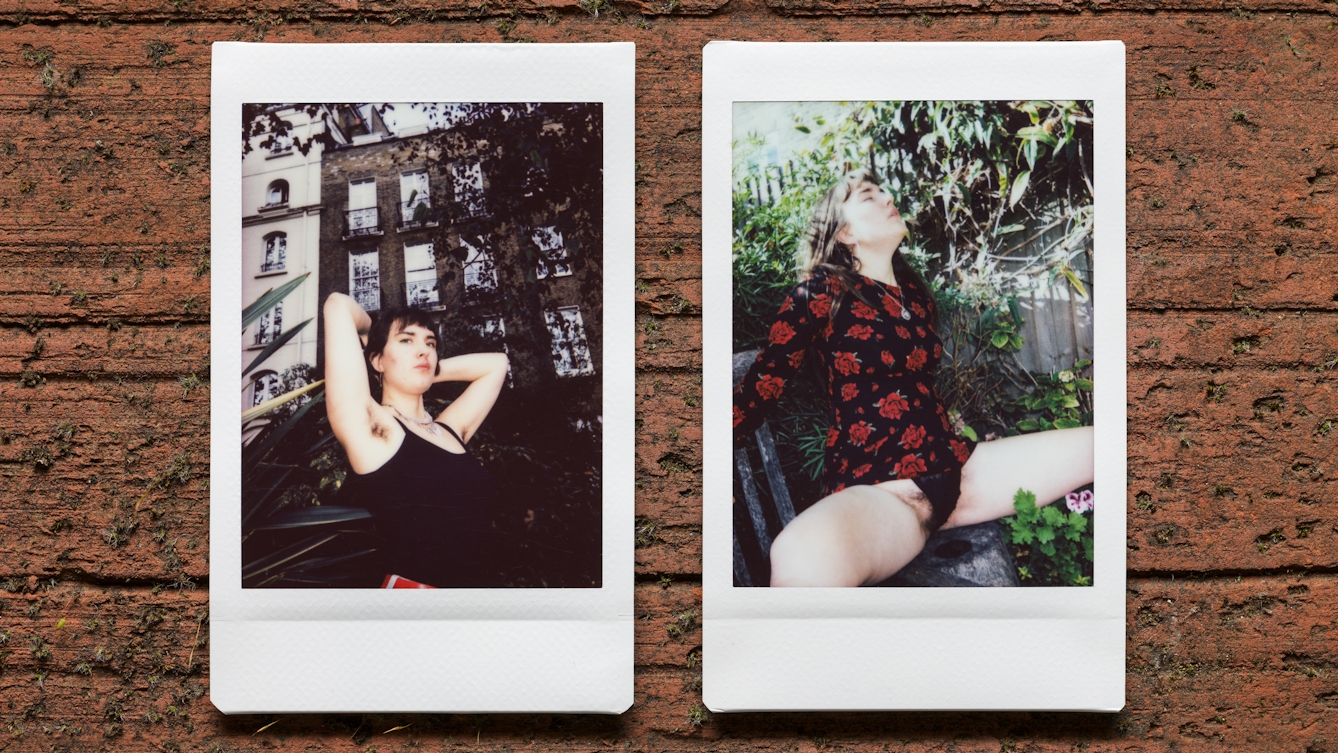
Eden.
“Having armpit hair helps me to suss out misogynists at clubs. If I flash my pits at someone and they’re repulsed, it’s a no-go. I could educate that person on the problematic origins of hair removal, but screaming, ‘The first recipes for depilatory creams included arsenic, which poisoned and killed women!’ over Drake is a bit of a mood-killer.
“I was shocked into keeping my body hair when I realised the waste that removing it generates. Billions of razors in landfill every year, plastic waste that is often dumped in countries that have contributed the least to climate change yet bear the brunt of its effects.
“Uprooting my hair was a painful pastime that generated bumps, bruises and ingrown hairs, the planet suffering while I desperately contorted my body to the male gaze.
“When London’s clubs reopen, I’ll be there with glorious pits, dyed fuchsia pink and covered in (biodegradable) glitter bright enough to light up the night (or blind any misogynist).”
Farah
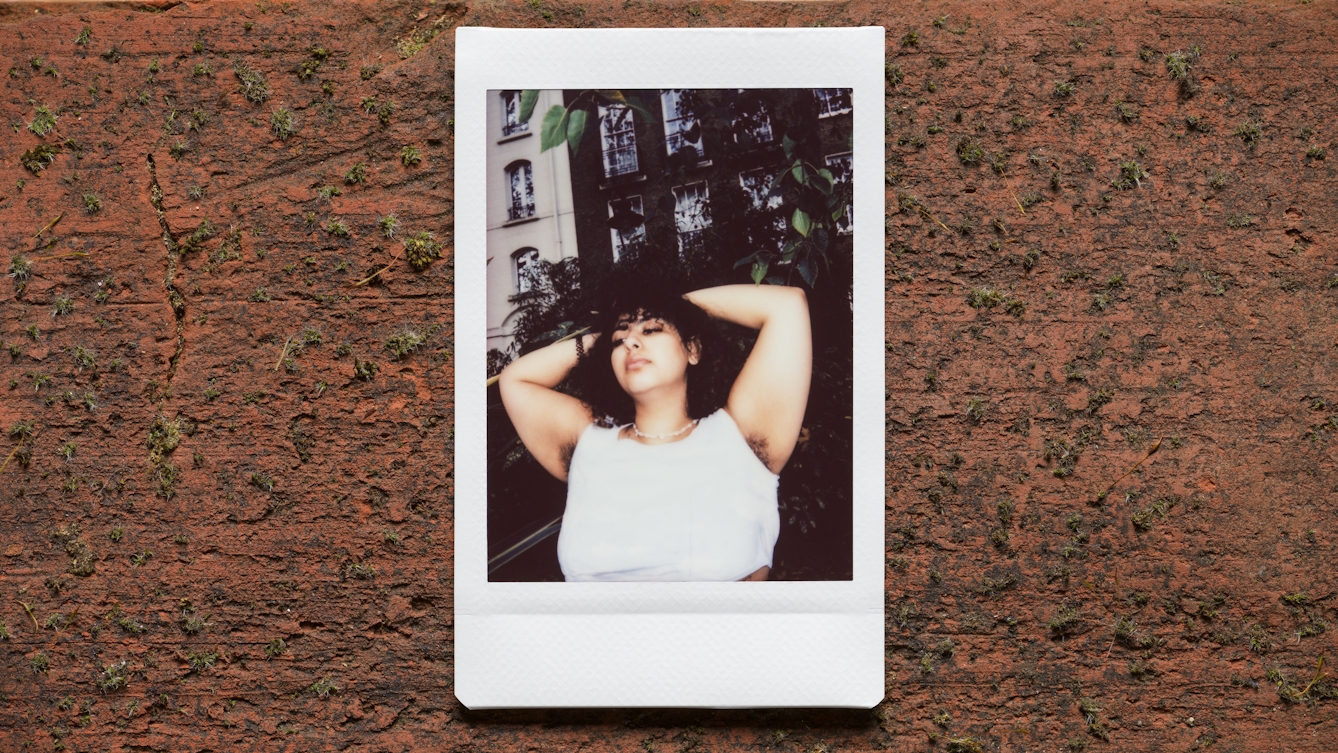
Farah.
“The Western beauty ideal in the 20th century was porcelain-white skin. Anything less suggested you were working class or, worse, an immigrant. I am, outrageously, both.
“I could tell you that in ancient Egypt the monobrow was a coveted symbol of beauty, while in the early Persian Empire it was considered a sign of intelligence. Instead, I’ll tell you how, aged 13, I shaved my eyebrows off in an agonised spiral of self-repugnance.
“Bathroom, mirror, GO! ‘What can I fix today?’ I’d ask myself. ‘There's no fixing genetics, but if I could make myself a little easier on the eyes...’
“I was a hairy Middle Eastern teenager, drowning in a sea of disproportionately white, middle-class students. Until recently, by my own standards and other people’s, I was hideous and markedly so. My weapon to right the harsh misfortune of being a brown woman was, prior to skin bleach, a razor.”
Grace
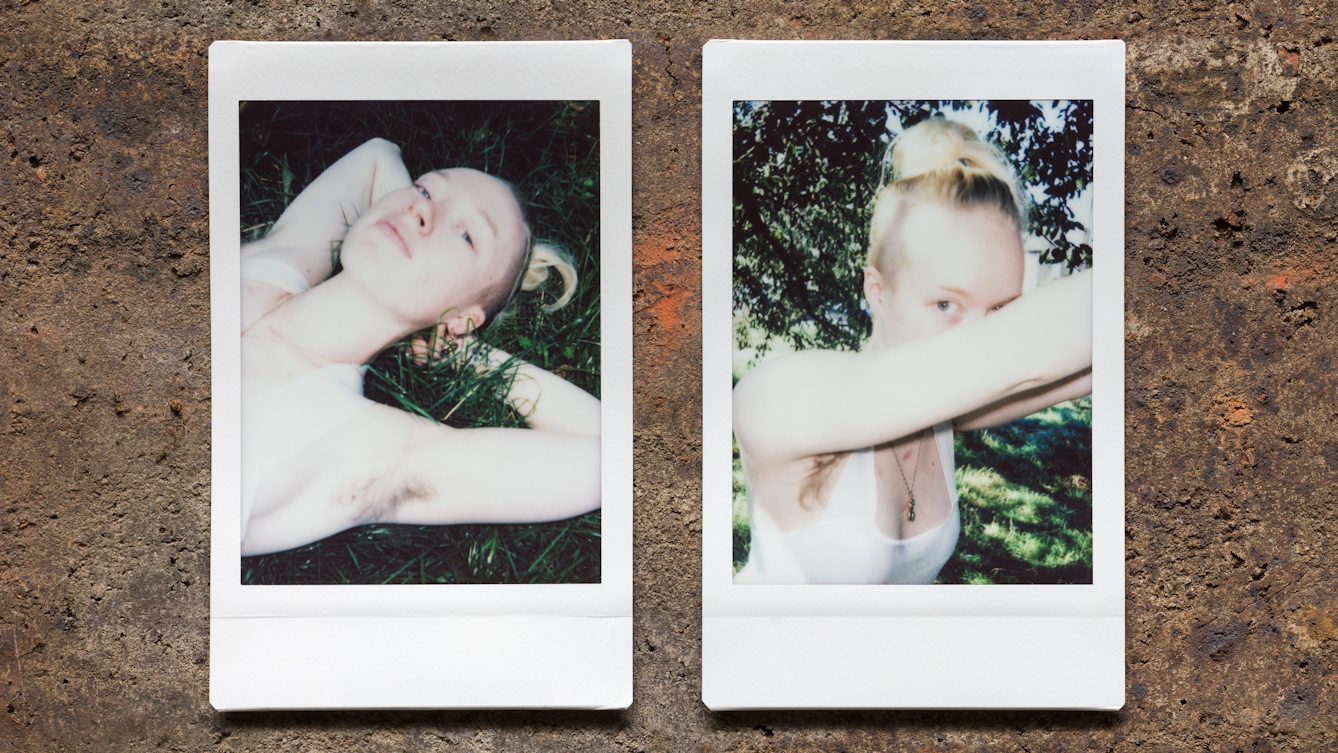
Grace.
“It wasn’t until lockdown that I decided I want to grow it out,” Grace explains. She’d shaved her body hair for 10 years, spending an hour in the shower at a time.
“It was lockdown that influenced [my choice], because you’re on your own and you become comfortable with it… As women, we can’t grow up. [Society wants us] to remain innocent and childlike.”
The pressure to be hairless once affected Grace’s romantic life. An ex-boyfriend wouldn’t go down on her if she had pubic hair. “He’d inspect it,” she says.
“Now, I am the best version of myself I have been… [I love] the satisfaction you get from making other people uncomfortable!”
Norvie
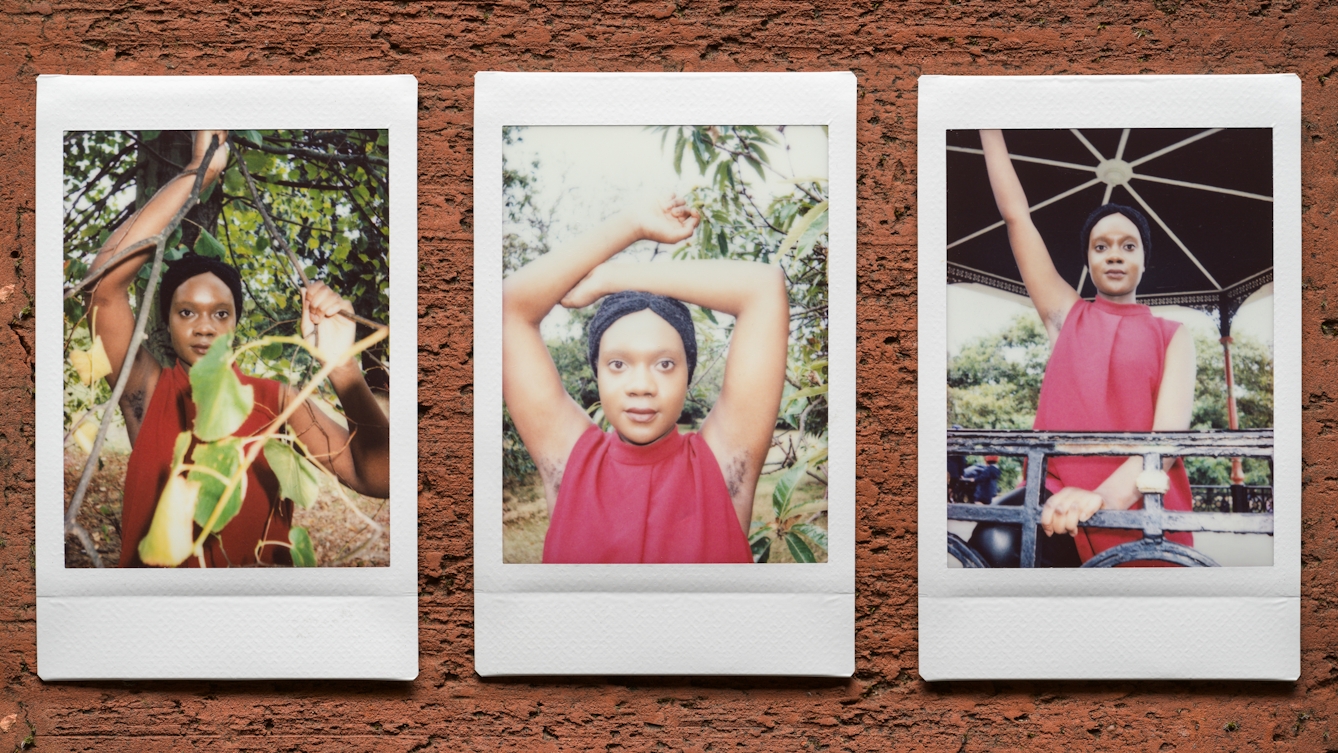
Norvie.
“Being Black in this country, I've already removed myself from the beauty standards because I don't fit those standards,” says Norvie. She grew up thinking whiteness and thinness were “right”.
Handed her first razor aged ten, Norvie didn’t question hair removal until adulthood. She implores us to start asking questions and to empower people from a young age, before we are conditioned to practise “harmful behaviours” to assimilate.
“Many people see hair as disgusting,” says Norvie. Even her brother feels this way.
Where does this colonial fetishisation of hairlessness originate? In ‘Plucked: A History of Hair Removal’, Rebecca Herzig writes that the emergence of Darwin’s evolutionary theory led people to associate body hair with primitive ancestry. To have body hair became a sign of animality, and to remove it marked one’s racial superiority and sophistication.
Norvie asks those who shave, “Is it really because you feel comfortable, or is it because you feel you have to, to fit in?” She asserts the beauty industry is “built on you hating yourself, so if you can truly love yourself as you are, hair included, you begin to dismantle that industry”.
“I’m just leaving it rather than going to the effort of removing it, but what I’m doing is a statement!”
Ciara
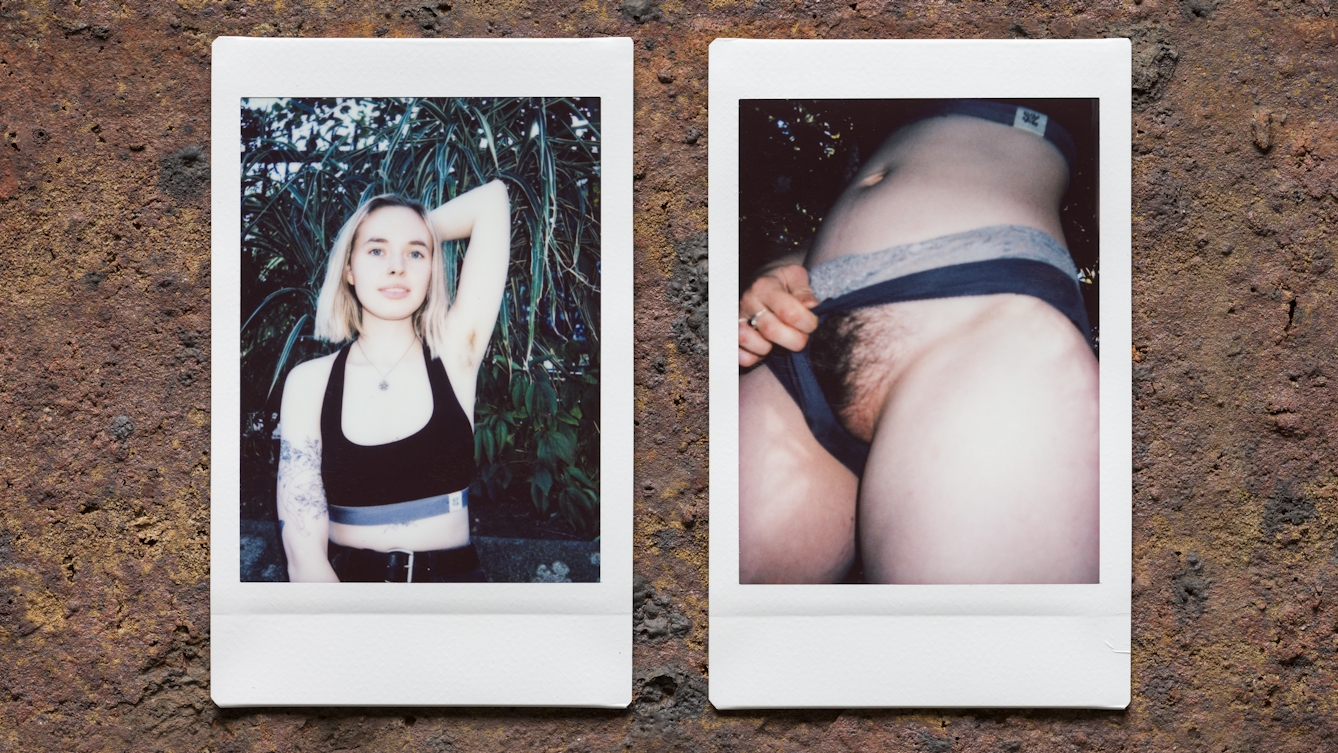
Ciara.
One time when shaving, Ciara “accidentally cut [her] lips down there”.
“It was so scary. What do I do? Can you get stitches in your vulva?”
She now bears her bush with pride, most recently baring it behind that bush in Charing Cross. Being queer gives Ciara a vivid connection to body hair. “I really like the look of it,” she says, “especially on other women – I’m like, that’s hot!”
Lena

Lena.
“Whenever you go to Egypt, where I come from, all the adverts are of white people and none of them look like us,” says Lena.
A ubiquitous ad for Fair & Lovely (a controversial skin-lightening product recently rebranded by Unilever as ‘Glow & Lovely’) began with a woman wanting to be a news reporter with little success. It ended with her now “fair and lovely”, securing her dream job and being asked out on a date. The message was simple: the fairer you are, the easier life will be.
Lack of representation leaves brown women and non-binary people feeling alienated: a fetish or a freak. Our hair is an ugly imprint of the failure to assimilate. We buy into beauty ideals – whitewash ourselves – for survival.
Lena explains, “I was told, ‘Why don't you straighten your hair? Curly hair is messy…’ From young, you’re told it's disgusting and boys bully you.”
Harriet
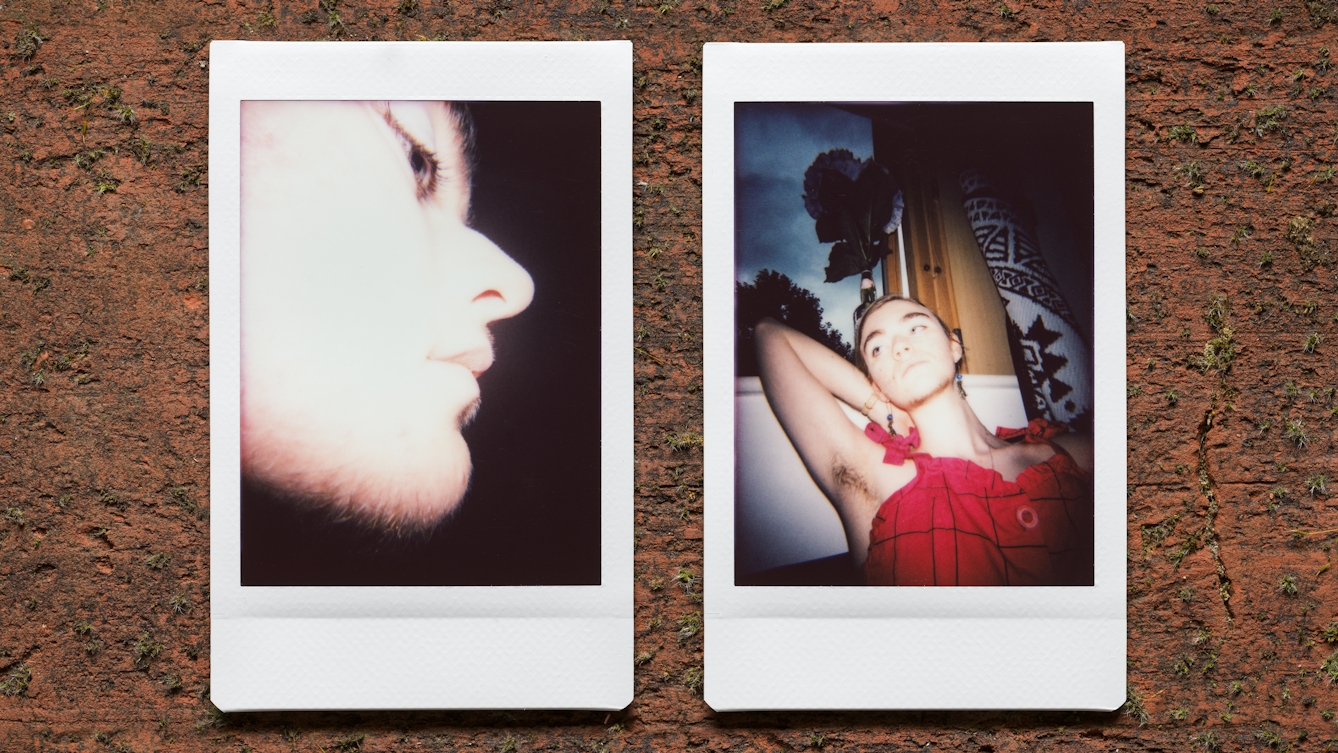
Harriet.
As a white woman growing up in Essex, Harriet “was the only girl in my class with hair on my legs and arms that wasn't blonde”. Hair removal was “a mark of pride in your appearance”.
Even so, the inescapable panic of red bumps and ingrown hairs left what she felt was a “shameful” implication of hair that once was. The beauty industry bullies us into the exhausting upkeep of gendered conventions, should we want respect.
“I never had a moment of realising ‘oh, this is OK’; I just stopped caring and thought everyone else should.”
“Now I don’t really care about the hair on my face; I consider it the same as acne,” she says. “It’s part of who I am. I don’t feel the need any more to think, ‘That has to go.’”
Facial hair on women is considered a radical act. For Harriet it’s the little hairs on her chin, for other women it’s the hair unifying their brows. These things send the gender binary into disarray.
Aaron
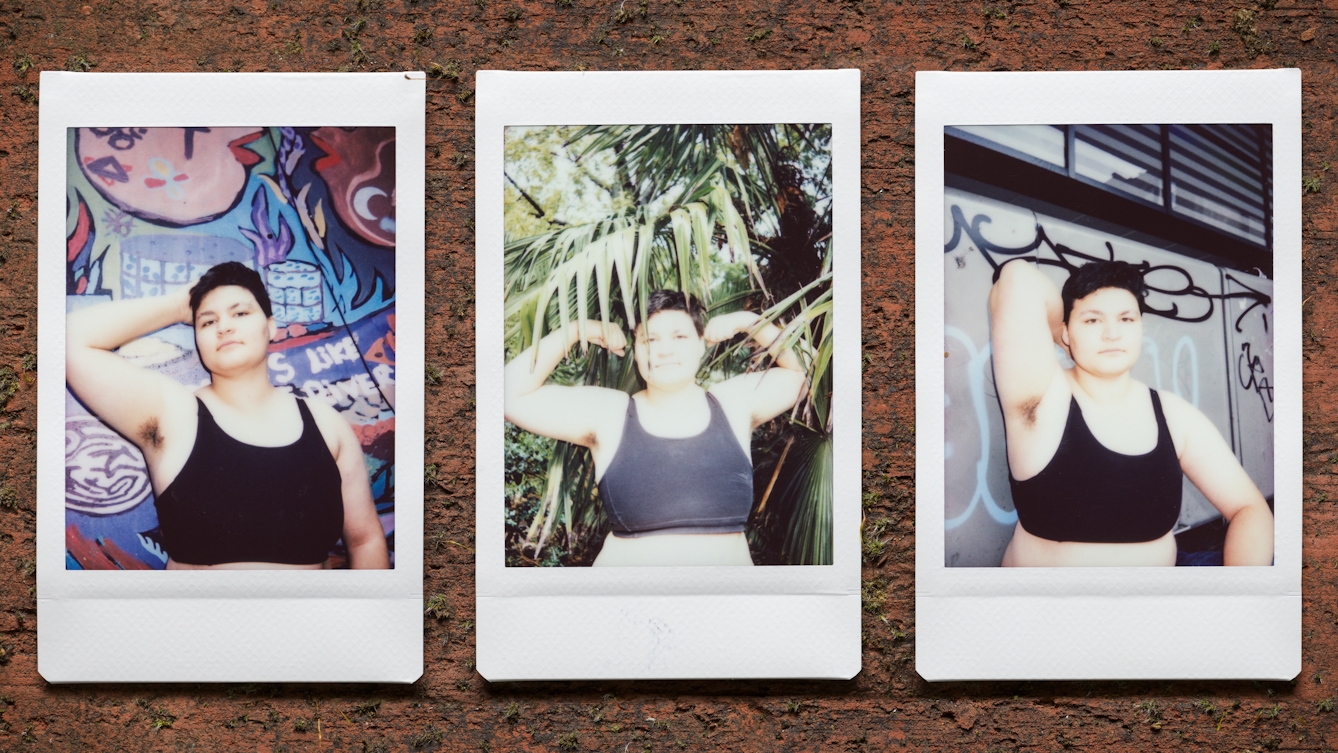
Aaron.
As a transgender man, Aaron’s hair became focal when he transitioned, because it was the “first thing that grew”.
“The ability to celebrate body hair openly is a privilege, one that I didn't use to have and now I do,” he says.
“That’s a weird part of being a trans man – you lose the privilege of being cisgender, but you gain the privilege of being male… Gender is something everyone should question, not just trans people.”
Edith
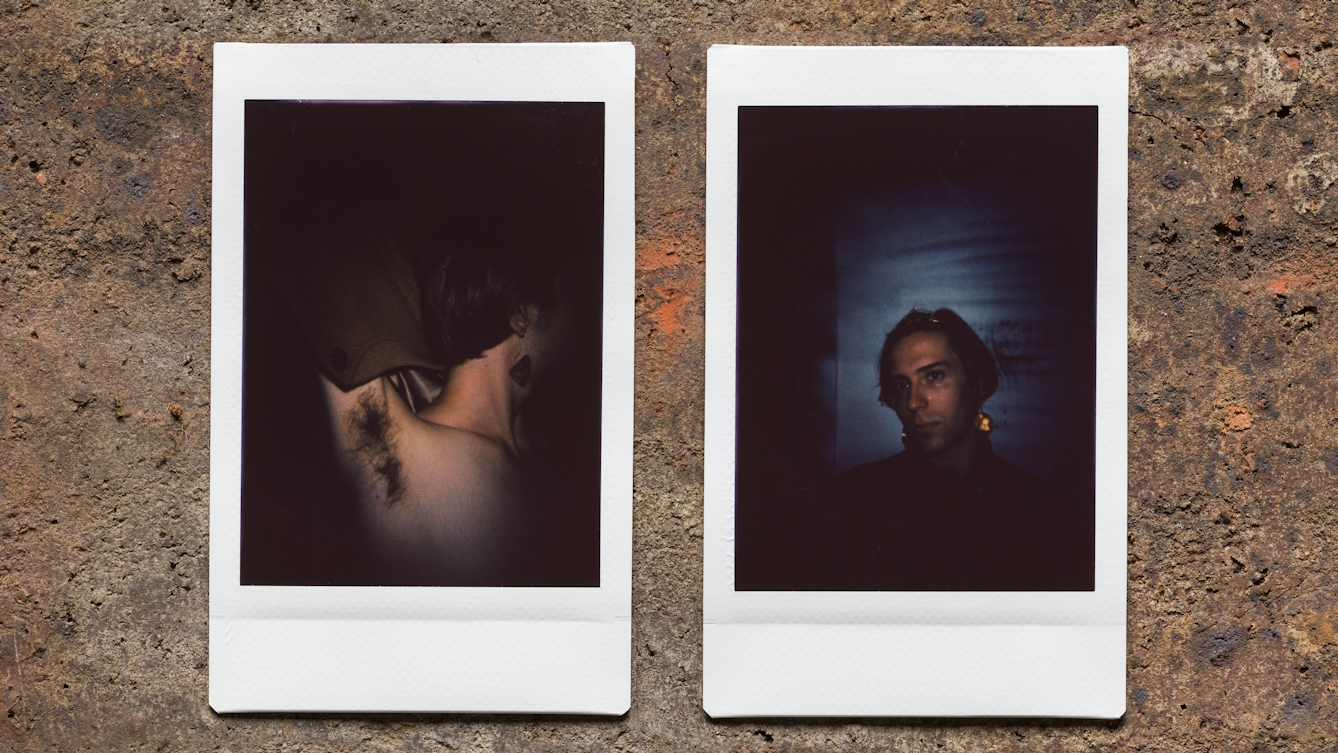
Edith.
“Being a transfeminine non-binary person, I was caught up on body hair because it became a gender marker,” explains Edith. For them, body hair has determined whether they “pass” or not.
“I unpacked the kind of misogyny of it. I’ve thought certain ways about what feminine bodies are ‘meant to look like’.
“Hair grows where it grows, and I think I quite value that in some way.”
As opposed to Aaron’s experience, Edith's hair requires them to limit their gender expression to mitigate gender-based prejudice.
Kefeshe
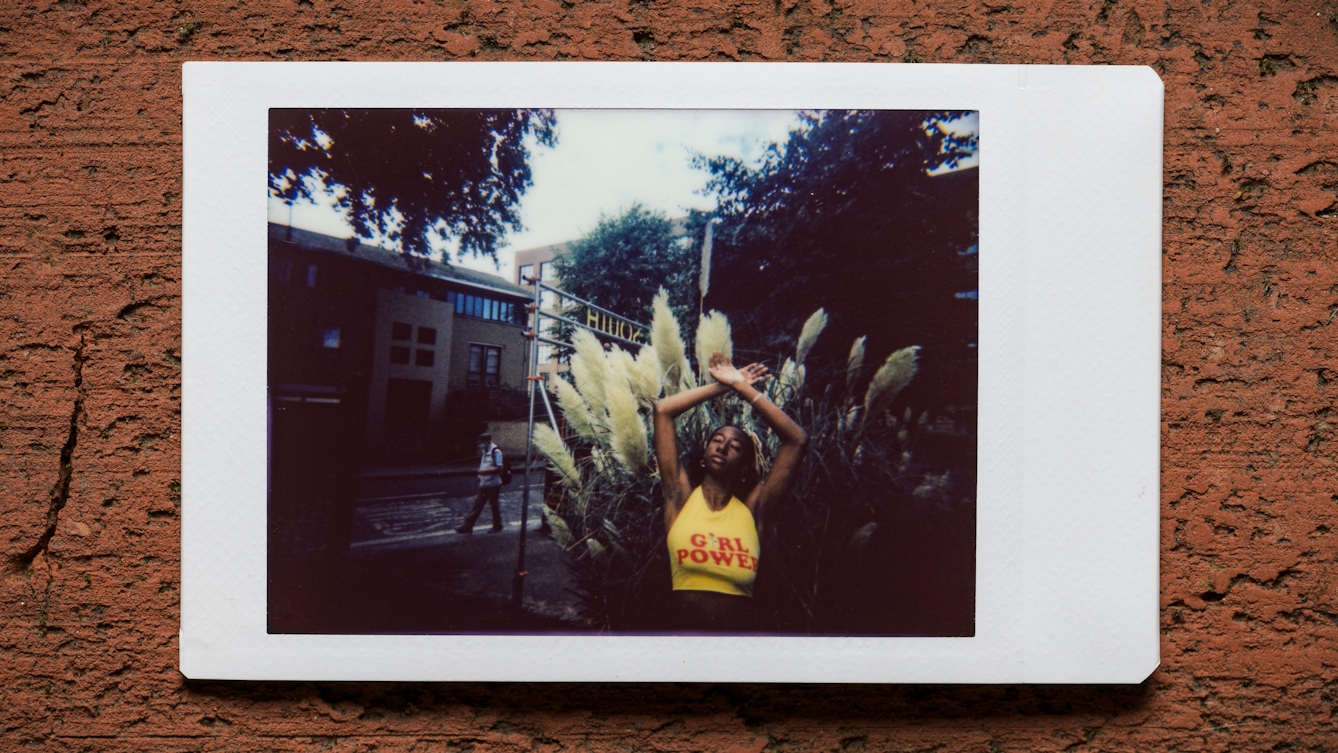
Kefeshe.
“Get children to understand that their bodies are perfect… whether that’s about their gender, their sexuality, their body hair, their race… I think education is a really powerful tool to do that.”
You can find out more about Farah and Eden’s project to celebrate body hair on their website, Hairy Godmother.
About the authors
Farah Esset
Farah Esset is a performer, poet and writer. She performed and co-devised a piece at Edinburgh Fringe in 2017 and was a featured poet at a V&A exhibition in 2018. She has worked at the Arcola Theatre for several years and is currently consulting for Element, which works with care leavers, to create a zine exploring creativity and activism. Farah aims to make art that creates discussion and moves people while educating them and challenging their biases and norms.
Eden Rickson
Eden is a student, climate-justice activist and spoken-word artist. She writes poetry for performance protests and is a member of Extinction Rebellion. She has been involved in major campaigns, like the action that forced the Royal Shakespeare Company to drop their sponsorship from oil giant BP. She has worked with the mental health charity Mind and the Young Vic, and her protest poetry has featured in the Guardian and the Daily Mail.
